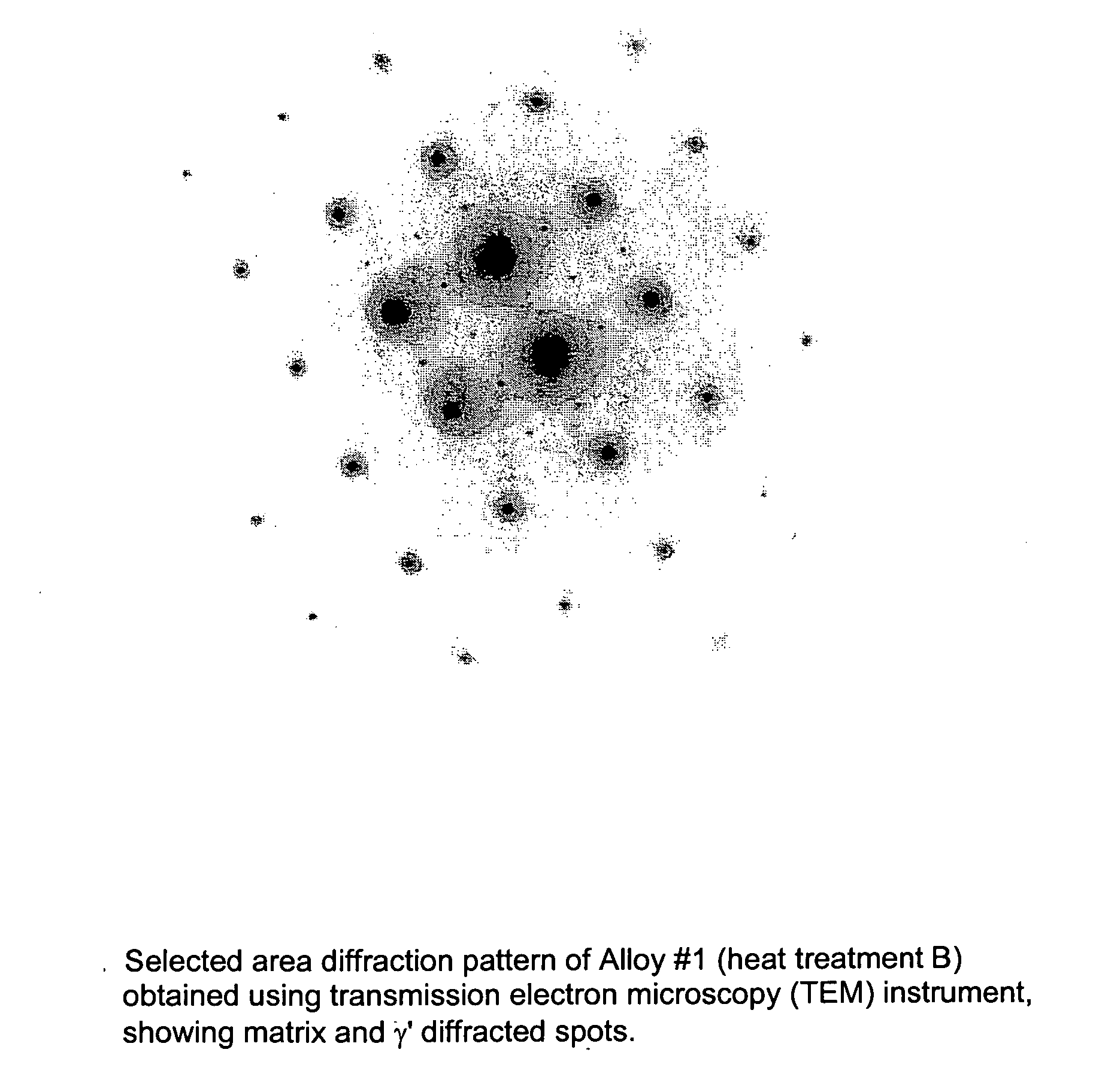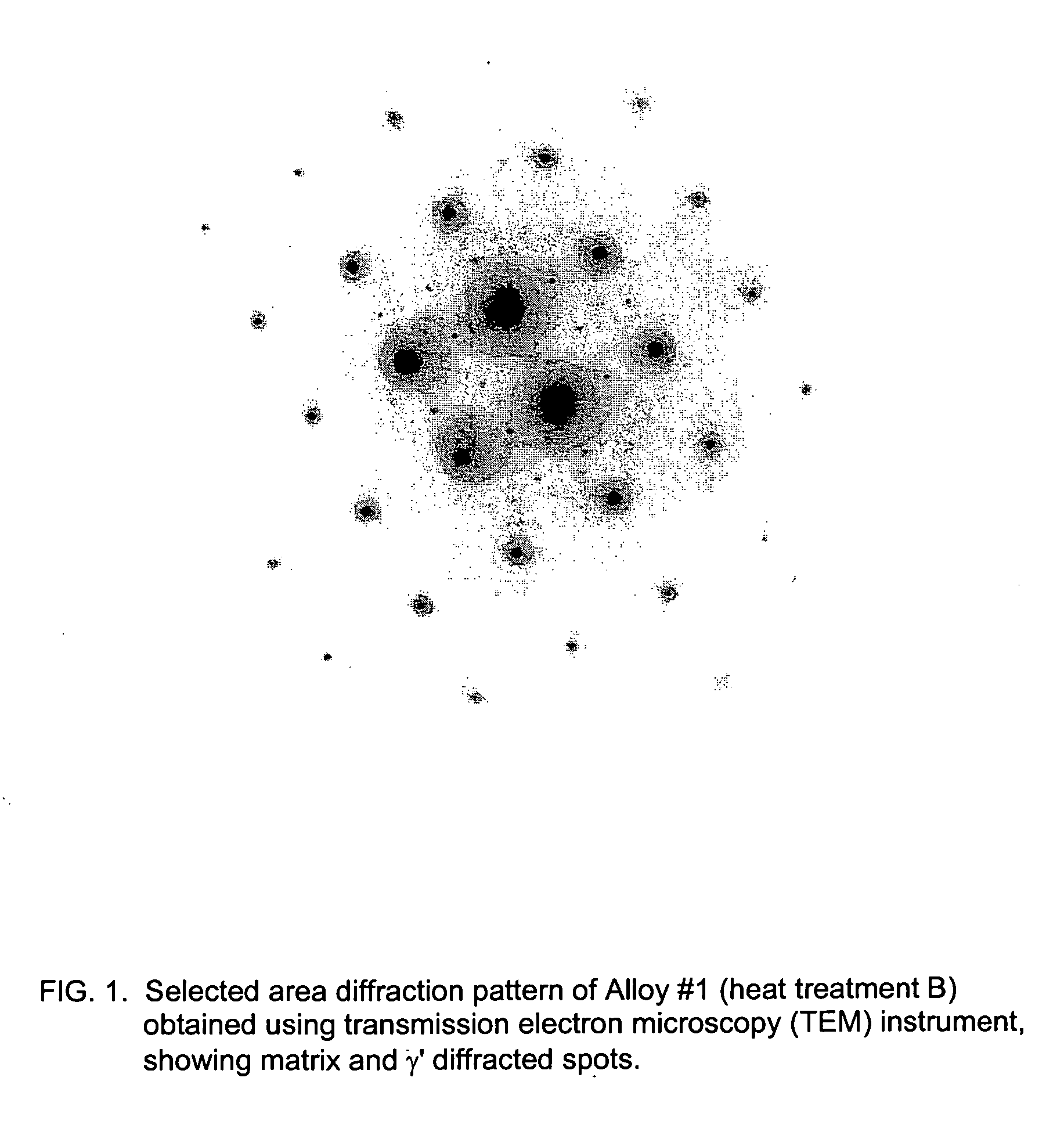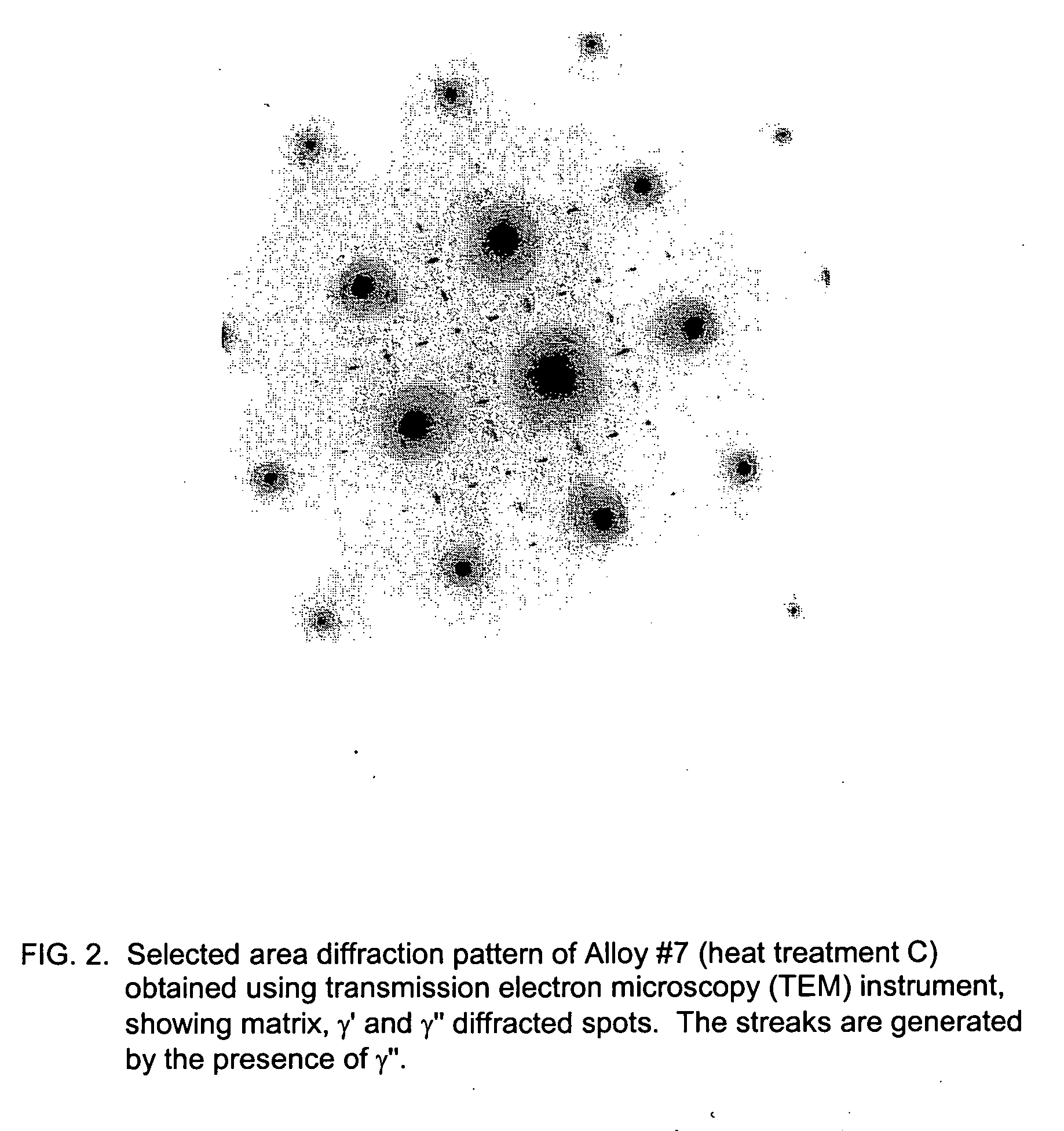High strength corrosion resistant alloy for oil patch application
a high-performance, oil patch technology, applied in the field of nickelironchromium alloys, can solve the problems etc., and achieve the effect of increasing the cost of heat treatment, less strength and/or ductility
- Summary
- Abstract
- Description
- Claims
- Application Information
AI Technical Summary
Benefits of technology
Problems solved by technology
Method used
Image
Examples
Embodiment Construction
[0016] As stated above, the chemical compositions set forth herein are in weight percentages. In accordance with the present invention, the alloy contains about 38-55% Ni, 12-25% Cr, 0.5-5% Mo, 0-3% Cu, 2.0-4.5% Nb, 0.5-3% Ti, 0-0.7% Al, 0.005-0.04% C, balance Fe plus incidental impurities and deoxidizers. Ni modifies the Fe-based matrix to provide stable austenitic structure, which is essential for good thermal stability and formability.
[0017] Nickel (Ni) is one of the main elements, which forms Ni3Al-type γ′ phase, which is essential for high strength. Further, a minimum of about 35% Ni is required to have good aqueous stress corrosion resistance. Rather high Ni content increases metal cost. The Ni range is broadly defined as 35-55% and, more preferably, the Ni content is 38-53%.
[0018] Chromium (Cr) is essential for corrosion resistance. A minimum of about 12% Cr is needed for aggressive corrosive environment, but higher than 25% Cr tends to result in the formation of alpha-Cr a...
PUM
| Property | Measurement | Unit |
|---|---|---|
| yield strength | aaaaa | aaaaa |
| temperature | aaaaa | aaaaa |
| temperature | aaaaa | aaaaa |
Abstract
Description
Claims
Application Information
 Login to View More
Login to View More - R&D
- Intellectual Property
- Life Sciences
- Materials
- Tech Scout
- Unparalleled Data Quality
- Higher Quality Content
- 60% Fewer Hallucinations
Browse by: Latest US Patents, China's latest patents, Technical Efficacy Thesaurus, Application Domain, Technology Topic, Popular Technical Reports.
© 2025 PatSnap. All rights reserved.Legal|Privacy policy|Modern Slavery Act Transparency Statement|Sitemap|About US| Contact US: help@patsnap.com



